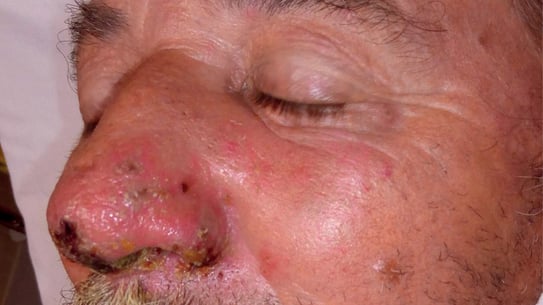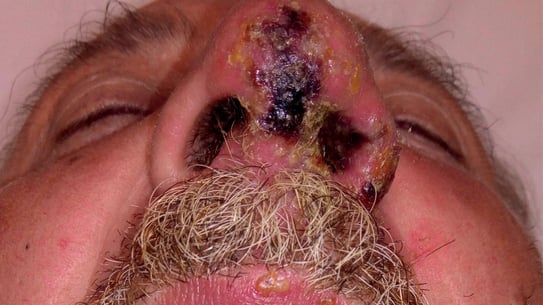0 professionals
Jean, 63 years old, Facial rash
Jean, 63 years old, Facial rash
URL copied
Written with the participation of FDVF (Future Dermatologists and Venereologists of France) interns.
Related topics


7 respondents
Question of 1
Shingles
Shingles
It is indeed shingles.
Let’s rule out differential diagnoses:
Ulcerated basal cell carcinoma
Wrong answer!
It was shingles.
Let’s rule out differential diagnoses:
Acute impetiginised eczema
Wrong answer!
It was shingles.
Let’s rule out differential diagnoses:
Erysipelas
Wrong answer!
It was shingles.
Let’s rule out differential diagnoses:
Antiviral treatment (oral valaciclovir or famciclovir, intravenous aciclovir):
Systematic local care:
Systematic symptomatic treatment:
Treating the secondary infection:
Treating postherpetic pain:
Preventive treatment = vaccination:
Create easily your professional account
I create my accountGet access to exclusive dermatological services to increase your professionnal knowledge: +500 pathology visuals, clinical cases, expert videos
Benefit from valuable features: audio listening, materials to be shared with your patients
Stay informed about the upcoming events and webinars, latest scientific publications and product innovations